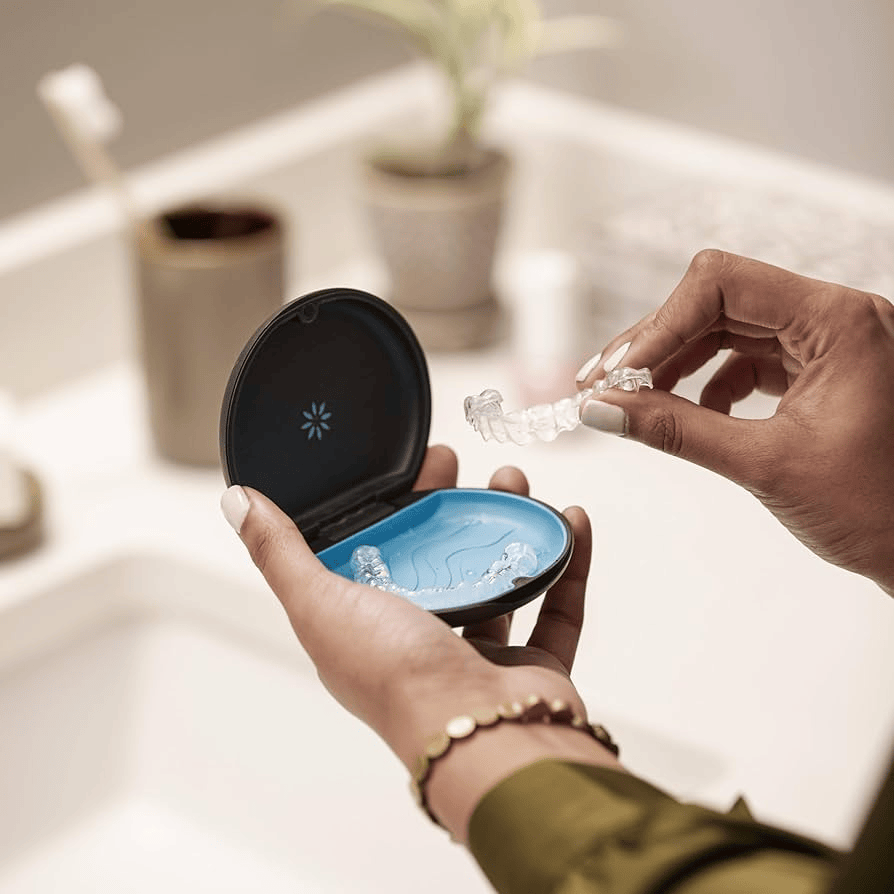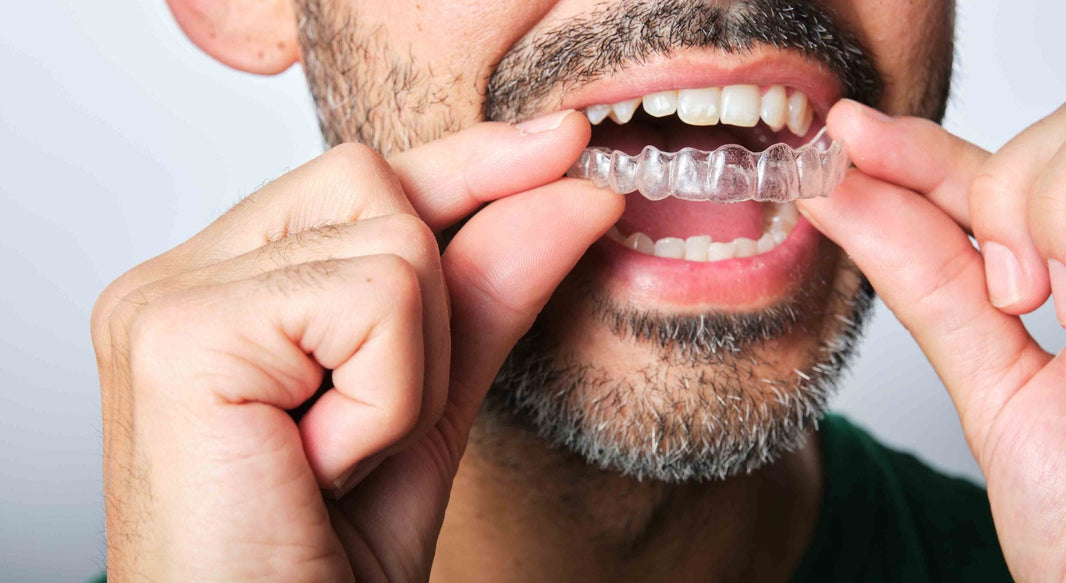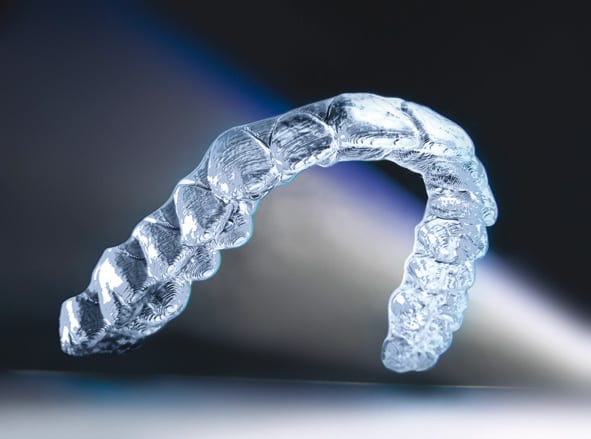Achieving your perfect smile is a commitment. Whether you've used braces, transparent aligners, or any form of orthodontic treatment, maintaining that beautiful smile requires diligence—especially when it comes to daily retainer wear. In this article, we'll explore the importance of wearing your retainer daily, the different types of retainers available, and how long you can expect to wear them.
Table of contents
Understanding the Importance of Retainers
After completing orthodontic treatment, such as braces or clear aligners, your teeth need time to settle into their new positions. Without a retainer, teeth can gradually shift back to their original, misaligned positions. This is where retainers play a crucial role.
The Role of Retainers in Dental Health
Retainers are essential in ensuring that the results achieved from orthodontic treatments are maintained. They act as a stabilizing force, allowing the bone and tissues around your teeth to adapt to their new alignment. Without them, the risk of your teeth reverting to their pre-treatment positions increases significantly.
Long-term Benefits of Consistent Retainer Use
Using a retainer consistently provides numerous long-term benefits, including the prevention of dental crowding and gaps. It also ensures that any adjustments made to your bite remain effective. Over time, consistent retainer use can even contribute to a healthier bite and jaw alignment, reducing the likelihood of jaw pain or discomfort.
The Psychological Impact of a Consistent Smile
A consistent smile not only boosts self-confidence but also contributes to better mental health. Knowing that your smile is maintained can alleviate anxiety related to appearance. This confidence can translate into various aspects of life, from personal relationships to professional settings, underscoring the importance of regular retainer wear.

Types of Retainers
Retainers come in various forms, each serving the purpose of keeping your teeth in place. Understanding the options can help you and your orthodontist decide which is best for your needs.
Essix Retainers: A Clear Choice
Essix retainers are clear, removable devices that fit snugly over your teeth. Made from a transparent plastic material, they are nearly invisible, making them a discreet choice for many. These retainers are easy to clean and maintain, adding to their popularity among users.

Hawley Retainers: The Durable Option
Hawley retainers consist of a plastic base that fits against the roof of your mouth or under your tongue, with a metal wire that wraps around your teeth. These retainers are durable and can be adjusted if needed. They offer a customizable fit, which can be beneficial for long-term wear.

Invisible Aligners: Aesthetic and Functional
Invisible dental retainers, sometimes referred to as invisible aligners or clear aligners, offer a more aesthetic option for those who prefer their retainer to be discreet. They are similar to clear plastic retainers but may be used as a follow-up to Invisalign treatments. Their ability to be removed during meals and cleaning makes them highly convenient.

Permanent Retainers
Permanent retainers, also known as fixed or bonded retainers, are attached to the back of your teeth using a special dental adhesive. They are often recommended for individuals who may have a higher risk of teeth shifting.

The Security of Permanent Retainers
Permanent retainers provide a constant reminder to keep your teeth in place. They are ideal for individuals who may not be diligent in wearing removable retainers. While they require more effort in terms of oral hygiene, they offer a no-fuss solution to maintaining your orthodontic results.
Maintenance of Bonded Retainers
Maintaining permanent retainers involves regular check-ups with your orthodontist to ensure they remain intact. Special flossing techniques are required to clean around the retainer, but with practice, it becomes an easy addition to your oral hygiene routine.
Comparing Permanent and Removable Retainers
Choosing between permanent and removable retainers depends on personal preference and lifestyle. While permanent retainers offer stability, removable retainers provide flexibility and ease of cleaning. Discussing these options with your orthodontist can help in making an informed decision.
How Long Should You Wear Your Retainer Daily?
A common question among patients is, "How long do I need to wear my retainer daily?" The answer depends on the specific instructions provided by your orthodontist, but here's a general guideline.
Initial Period: The Adjustment Phase
Right after your braces or aligners are removed, you may need to wear your retainer full-time (except when eating or brushing your teeth) for a period ranging from a few months to a year. This phase is critical as it helps your teeth stabilize in their new positions. Skipping this phase could lead to relapse, undoing the hard work of your orthodontic treatment.
Transitioning to Nighttime Wear
After the initial period, wearing your retainer nightly is usually sufficient to maintain your smile for the long term. This transition phase allows your teeth to gradually adapt while still receiving the necessary support. Regular nighttime wear ensures that your smile remains as perfect as the day your braces were removed.
Customizing Your Retainer Schedule
It's crucial to follow your orthodontist's recommendations, as each individual's dental needs can vary. Some may require longer full-time wear, while others may transition to nighttime wear sooner. Regular dental check-ups will help in adjusting your retainer schedule according to your specific needs.
Caring for Your Retainer
Proper care and maintenance of your retainer are vital for its longevity and effectiveness. Here are some tips to keep in mind.
Cleaning Your Retainer: A Daily Routine
Daily cleaning of your removable retainer with a toothbrush and mild soap or non-abrasive toothpaste is essential. Avoid using hot water, as it can warp the plastic. Regular cleaning prevents the buildup of plaque and bacteria, ensuring your retainer remains hygienic and effective.
Deep Cleaning and Soaking Techniques
Occasionally soaking your retainer in a denture cleaner or a mixture of water and vinegar can remove any stubborn buildup. This deep cleaning process should be done weekly to maintain the retainer's clarity and function. It's a simple step that can significantly extend the life of your retainer.
Protecting Your Retainer from Damage
Keep your retainer away from pets and do not wrap it in a napkin, as it can easily be thrown away or damaged. Always use its protective case when not in use. This not only prevents physical damage but also reduces the risk of losing your retainer.
Storage: Keeping Your Retainer Safe
When not in use, store your removable retainer in its protective case to prevent loss or damage. A dedicated storage space ensures that your retainer is safe from accidental damage or misplacement. Investing in a durable case can save you from the hassle of replacing a lost or damaged retainer.
Potential Issues with Retainers
While retainers are generally safe and effective, there can be some challenges.
Adjustments and Repairs: Keeping Retainers Functional
Both removable and permanent retainers may require adjustments or repairs over time. If you notice any changes in fit or damage, contact your orthodontist promptly. Regular check-ups can preemptively address any issues, ensuring your retainer remains effective.
Recognizing Signs of Wear and Tear
Understanding the signs of wear and tear on your retainer can help in seeking timely repairs. Look for cracks, warping, or discomfort when wearing your retainer. Early detection of these issues can prevent more significant problems down the line.
The Importance of Professional Adjustments
Attempting to adjust your retainer at home can lead to damage. Always seek professional help for adjustments to ensure the integrity of the retainer is maintained. Your orthodontist can make precise adjustments that ensure continued comfort and effectiveness.
Oral Hygiene: Essential Practices
For those with permanent retainers, maintaining oral hygiene is essential. Use floss threaders or special brushes to clean around the retainer to prevent plaque buildup. Regular dental cleanings can also help in managing hygiene around permanent retainers.
Tools for Maintaining Oral Hygiene
Investing in specialized dental tools, like water flossers or interdental brushes, can make cleaning around permanent retainers easier. These tools are designed to reach areas that regular brushes cannot, ensuring comprehensive oral care.
Regular Dental Check-ups
Regular visits to your dentist or orthodontist can help in monitoring the health of your teeth and gums. These check-ups allow for professional cleanings and early detection of any potential issues related to your retainer.
How long should a retainer be worn per day?
In most cases, you’ll be instructed to wear your retainer every night for the first year after treatment. After that, you can gradually reduce usage to a few nights per week. Skipping retainer wear entirely increases the risk of your teeth gradually shifting out of alignment.
Can I stop wearing my retainer after 10 years?
Although some individuals—especially those treated as teenagers—might scale back retainer use after a decade, ongoing use is typically recommended to maintain alignment. For adults or patients with a history of relapse, lifelong nighttime wear is often advised. Always check with your orthodontist before making changes to your routine.
What is the lifespan of a retainer?
How long a retainer lasts depends on its material and how well it’s cared for. Hawley retainers, made of metal and acrylic, can often last between 5 and 10 years. Clear plastic retainers like Essix usually need replacing every 1 to 3 years. Bonded (fixed) retainers can last indefinitely with proper hygiene and regular dental visits.
Do I really need to wear my retainer 24/7?
No, wearing your retainer around the clock for life isn’t necessary in most cases. Usually, full-time wear is only required during the initial 6 to 12 months following orthodontic treatment. After that, most patients switch to wearing their retainers only at night to maintain results.
Conclusion
Wearing a retainer daily is a small but significant part of maintaining the results of your orthodontic treatment. Whether you have a removable clear retainer, a Hawley retainer, or a permanent bonded retainer, consistency is key to keeping your teeth straight and your smile vibrant.
By understanding the importance of daily retainer wear and following the guidance of your orthodontist, you can ensure your teeth remain in their desired position for years to come. Remember, the journey to a perfect smile doesn't end when the braces come off—it continues with diligent retainer wear and care.
Whether you're new to the world of retainers or a seasoned user, keeping these insights in mind will help you preserve the hard-earned results of your orthodontic journey. Embrace the routine, and your smile will thank you for years to come.






